The most effective way to make boots smaller is from the inside. Reducing the space inside your boots using a pair of thick work socks is the easiest and most reliable method.
If thick socks don’t make the boot tighter, insoles will remove between a half and a full boot size by lifting your foot.
Toe fillers and heel grips make your boots smaller at the front and back, making them feel tighter. The ladder lacing technique restricts the movement of your foot inside the boot and should be your lacing method of choice.
Turning your size nine boots into the size eight you meant to buy is easier than it sounds and doesn’t involve cutting them in half or shrinking them in water.
Like when my rucksack straps fell apart during a three-day hike, and I had to improvise straps using cable ties and a lot of prayers, I’m a fan of finding easy fixes to problems. And when it comes to poorly fitting boots, throwing them away because they’re too big makes me break out in a cold sweat.
If you’re trapped with a pair of boots that are way too loose, I’m here to show you how to make them smaller and tighter so they’ll fit as they should without having to chop them in half.
Table of Contents
What You’ll Need to Make Your Work Boots Fit Tighter
Making your work boots tighter is all about minimizing the free space that’s inside your boots. I’m against soaking your boots as it’s damaging to the leather.
As you can’t trim an inch or two off the outside, you’ll need items that bulk out your foot or reduce the space inside your boots.
You’ll need the following:
- Thick work socks like the Camel City Mill Heavyweights
- Insoles
- Toe Fillers
- Heel Grips
- Long boot laces
5 Ways to Make Your Work Boots Tighter
Your work boots shouldn’t be so tight that your feet hurt or your toes are scrunched. Half an inch of space at the toe is typical for work boots.
On the other hand, your boots can’t be so loose that you feel like you could get both feet in one boot. Too loose, your foot will slide, you’ll trip over things, and your posture will be affected.
Before you start looking at ways to tighten your boots, you’ll need to know where inside your boot is too loose, and then go through each method below to see which one best suits your needs.
1. Wear Thick Work Socks
If your work boot feels loose, wearing thick work socks is the best way to fill it out.
Padding out your entire foot by wearing the proper socks will reduce the free space inside your boot and make them feel much tighter.
The toughest, thickest sock I’ve found is the Camel City Mill Heavyweight Work Sock, a premium quality sock that’s ideal for making your boots feel tighter. It’s thermoregulated, so you don’t have to worry about overheating.
As it’s heavily cushioned at the heel and toe, your feet will feel snug to the front and back of your boots.
The Camel City Mill Heavyweight gives me the most comfort because of the added padding through the toe, arch, and heel. These are also made with a high percentage of Merino wool, so they insulate well without making your feet sweaty.
Step 1: Try on Your Work Socks
I don’t recommend wearing multiple pairs of socks as you’ll soon overheat while working, so try on your thick work socks and wear your boots around the home for a few hours.
Ideally, you want to do this as early in the day as possible, as by late evening, especially after a long day, your feet will have swollen slightly. If you test your socks in the evening, you might not get an accurate measurement of whether they’re thick enough to solve the problem.
Step 2: Try Your Boots and Socks at Work
Sometimes, you just have to jump in at the deep end and try to swim. Wearing your thick work socks with your boots for a day at work, you’ll be able to see if your boots are tight enough.
It’s hard to replicate the full range of movement your feet go through every day while testing your work socks at home, and walking, climbing, bending, and twisting at work will give you an idea of where additional work is needed.
Work socks often pad out the sides and footbed of your boots, so if your boots still feel loose, a day at work will help identify if it’s the heel, toe, or upper that’s still too loose.
2. Insoles Raise Your Feet and Reduce Free Space
One of the best ways to make your boots tighter also has the added benefit of making them even more comfortable.
Insoles are primarily for comfort or adding support if you’re a plantar fasciitis sufferer, but they’ll also make your boots smaller by reducing the free space inside them.
Wear insoles that contour to your feet and add arch support, as that will reduce foot fatigue and hold your foot in place too.
My favorites are the TreadLabs Ramble Insoles, which can take a lot of impacts and still feel great. At 5mm thick, the Ramble insole also really lifts your feet inside your boots, which pushes your foot into a smaller area.
Finding an insole that delivers comfort, support, and results isn’t as easy as you’d think, which is why the Ramble is such an awesome product. Suitable for everyday use, the Ramble contours to your heel and protects your feet from impacts. Even if you feel like your feet are fine, you’ll feel an immediate increase in comfort.
Step 1: Insert the Insoles
Place your insoles inside your work boots and try them on. You’ll notice an immediate reduction in free space and increased support and comfort.
If you’re wearing your thick Camel City Mill Heavyweights, you can get a feel for how much tighter your boots are. It could be that a combination of raised insoles and your socks completely fix your problem.
Step 2: Adjust If Necessary
You’ll need to move the insole around until it’s comfortable and in position. One option once you’re happy is to stick the insole into place with a small amount of glue to stop slippage.
A benefit of choosing the TreadLabs Ramble is that they’re available in several arch heights if you need more support.
The raised insole and arch will also securely hold your feet in place. If your boots are too loose, an insole will stop your feet from sliding around inside, making them doubly effective at making them feel tighter.
You can trim down the insole if it’s too large for your boots if necessary. Just make sure it’s flush against the sides, front, and back of your sole.
Step 3: Say Goodbye to Loose Boots
Insoles tighten your boots by giving your feet less space to move around.
You should now have boots that are a much snugger fit, especially if you’ve worn your work socks at the same time.
If you still feel too much space in the heel or toe area, you’ll need to move on to the next option.
3. Toe Fillers for Loose Toes
Not too long ago, people only had one option when trying to reduce the toe area of their footwear—tissue paper. Thankfully, there are many more permanent and effective options available today.
Toe fillers sit at the front of your toe box, reducing the space between your toes and the front of your boot.
You’ll always want between a half-inch and an inch of space at the front, so your toes aren’t squashed, but a toe filler like Geyoga Toe Filler inserts makes your boots feel much tighter. Being made of foam, you can also tweak them to the size that suits your toes.
Geyoga has put together a superb pack of boot add-ons here, including adjustable toe fillers that are ideal for tightening your toe box. Loose boots can make your feet slide around, causing rubbing and a lack of control, but a comfortable toe filler will reduce space without compromising comfort.
Step 1: Insert the Toe Filler
You should try this step out at home when you’ve got a few hours free, as you’ll need to walk around in your boots for a while and might need to alter the toe fillers a few times.
Insert the toe fillers into your boots and wear your usual work socks. You need your work socks on to get a feel for how tight your boots will be at work, so wearing the socks you’re going to work in gives you an accurate fit.
Step 2: Test Out the Fit
The last thing you want is to wear your boots at work only to find the toe fillers force your toes into unfamiliar positions, so test out the toe fillers at home.
Walk around in your boots for a while, and get a feel for where the filler sits. If your toes feel cramped, you’ll have to adjust or even trim down the toe filler to make it comfortable.
You’ll need around a half inch of free space between your toes and the filler, allowing complete freedom of movement. You should feel the toe fillers only when walking, and your foot occasionally moves forwards in your boot.
Step 3: Stick the Fillers in Place
Once you’re happy, you can fix the toe filler in place. I’ve used a small blob of glue to hold mine in place—they can still be removed easily enough.
Another way to get the fillers to hold position is to spray them with hairspray and then place them into position. Once they’re settled, you shouldn’t get any movement, and your boots will feel much tighter.
4. Adding Heel Grips Tightens the Fit
If you’re wearing your work socks, and your boot still feels too loose, especially at the ankle and heel area, your best option is to use heel grips.
Heel grips fix to the back of your work boots, often with self-adhesive tape, and force your foot forwards slightly. This makes your boot feel more secure as there’s less give at the back.
If you’ve ever suffered heel slippage, you may have used heel grips before. Combined with lacing your boots properly, heel grips make your boots feel a much tighter fit.
I use Dr.Scholl’s Foam Heel Liners because they’re entirely reusable and stay in position really well.
As well as padding out your heel, making your boots feel tighter, these foam heel grips will prevent any blistering you’ve been getting from having loose boots.
If you’re after a fix for loose boots or want to prevent blistering, Dr. Scholl’s Heel Liners are an excellent option. They’re easy to attach, look unobtrusive, and solve multiple problems simultaneously. For tightening the feel of your boot, heel grips are a simple and effective fix.
Step 1: Check the Amount of Space at the Heel
Put on your work boots (wearing your usual work socks, you know the rule) and check how big a gap is at the heel.
You’ll be attaching at least one heel grip to the inside of the boot, so you need to know how the boots sit while they’re on. Heel grips can be overlaid, one on top of another, allowing you to bulk out the heel area.
Step 2: Insert One Heel Grip in Each Boot
Stick a heel grip into the rear of your boots and then try them on to check the gap. You should walk around in your boots for a while to ensure the grip is securely in place and in the correct position at the back of your heel.
Check the gap between your heel and the back of your boot to see if there’s still a gap. If your boots still feel too loose, the only way to tighten them is to add another heel grip.
I’ve tried using three grips on top of each other but found they move around too easily, so I don’t advise using more than two. You can place one heel grip alongside another and then put two grips on top to pad out the heel of your boot.
Step 3: Check Your Laces Are Tight
You should now have much less space for your foot to move around inside your boot, and the heel grips will hold your foot slightly more forwards, making the boot feel tighter.
The last thing you’ll need to do is ensure your boots are well tied, as the combination of the laces holding your foot down and the heel grips pushing it forward makes your boots a much tighter fit.
5. Using the Ladder Lacing Technique
Most people never take the laces out of their boots, and even when they do, re-lace them the same way their boots came laced in the first place.
There’s nothing wrong with the standard lacing technique, especially when your boots fit like a glove, but if they’re too loose, there’s a much better way to lace them.
The ladder lace system is the most effective way to lace your boots. The military uses it mainly because it’s proven to offer incredible stability and support.
If you try this method, which I strongly recommend, you’ll probably need longer laces than usual.
A plus to buying long laces like the Miscly Round Boot Laces is that they’re incredibly strong and will take a lot of abuse, but they’re also long enough to apply the ladder lace technique easily.
Don’t underestimate the difference great boot laces will make. Miscly Boot laces are longer, stronger, and add absolute security to your boots. Longer than your average lace, Miscly laces are perfect for military or work boots as you’ll be able to lace them properly to add support to your boots.
Step 1: Start at the Bottom
Starting at the bottom eyelets, thread the ends of your long boot laces through the eyelets, leaving the same length of lace at each end.
Have the laces go into the eyelets from the inside so the lace heads out through the eyelet towards you.
Move up one set of eyelets, and this time, thread the laces in from the outside, going into the eyelets.
The left-hand lace goes into the left-hand eyelet, and the right-hand lace goes into the right eyelet. Don’t cross the laces at this point.
Step 2: Cross the Laces
Once you’ve got the laces going into the eyelets, cross the right lace over to the left and the left lace over to the right. Rather than threading the lace through the eyelet, you need to thread each under the vertical line of lace showing.
Once the left-hand lace is threaded under the vertical line between the first and second eyelets, you move up to the third eyelet and thread the lace through from the outside, going inwards.
Do the same on both sides of your boot, and then keep working your way up both sides, sliding the lace under the vertical line before moving up to the next eyelet.
Step 3: Work Your Way up the Eyelets
The ladder lace technique is tricky to master but worth the effort. If you struggle to get it right the first time, don’t worry, everyone does.
Once you’ve perfected it, you’ll notice your boots feel a lot tighter and more secure. There’s a reason it’s so popular with military personnel—it keeps your feet securely in place.
Fitting It All Together
As with most problems, there’s often more than one solution, and combining two easy fixes at once can work even better.
I’ve always found that combining my Camel City Mill Heavyweight Work Sock with TreadLabs Ramble Insoles makes my boots tighter, especially as I’ve got small feet.
The Camel City Mill Heavyweight gives me the most comfort because of the added padding through the toe, arch, and heel. These are also made with a high percentage of Merino wool, so they insulate well without making your feet sweaty.
You’ll often find that the larger your feet, the more you suffer with the toe box or heel being too loose, which is why Geyoga Toe Filler inserts and Dr.Scholl’s Foam Heel Liners are such popular solutions.
If you’re after a fix for loose boots or want to prevent blistering, Dr. Scholl’s Heel Liners are an excellent option. They’re easy to attach, look unobtrusive, and solve multiple problems simultaneously. For tightening the feel of your boot, heel grips are a simple and effective fix.
I hope you’ve found this article helpful, and you should now be able to tighten your work boots, so they’re comfortable and secure.
FAQs
Are work boots supposed to fit loose?
Work boots shouldn’t be too loose or too tight. They need to be a snug fit that doesn’t feel constrictive when wearing them. Ideally, you should have around half an inch of space between your toes and the front of the toe box and enough room at the heel that your boots don’t rub.
How do I know if my work boots are too big?
If your boots are too big, you’ll notice your feet sliding forwards in the boot when you walk. This will cause you to alter how you walk. If they’re too loose around the ankle, this will cause rubbing. The boots need to be snug but not tight and should be able to accommodate thick works socks.
Can a cobbler tighten boots?
A cobbler might be able to tighten the shaft of your boots, especially if they’re tall boots. Physically changing the size of your boots will most likely cause too much damage, so a cobbler would have to reduce the size of the boot from the inside, using insoles, heel grips, or toe fillers.
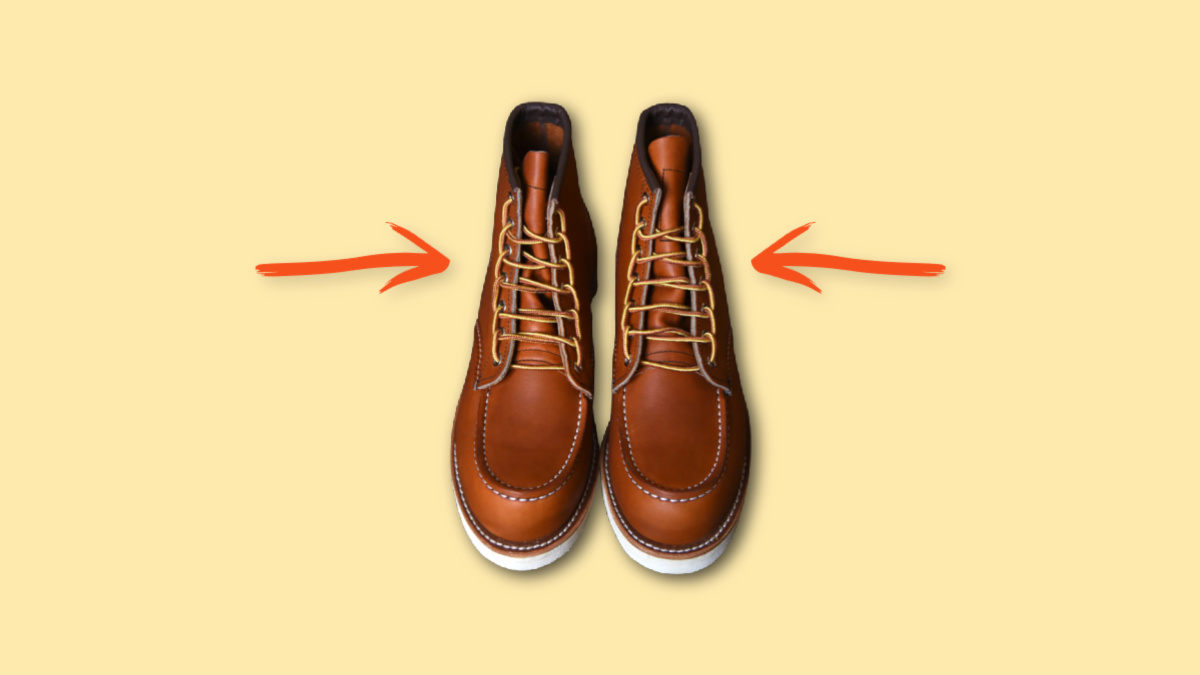
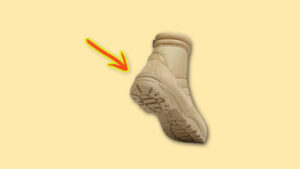
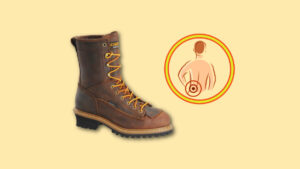
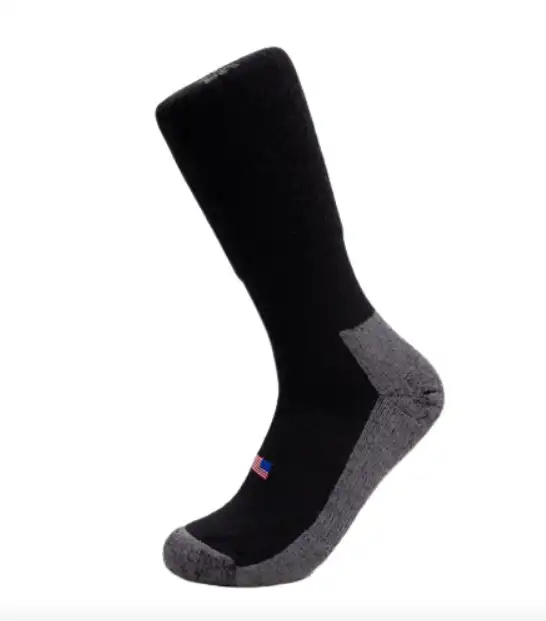
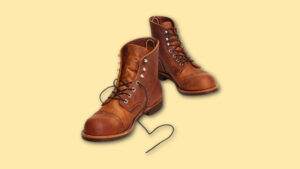
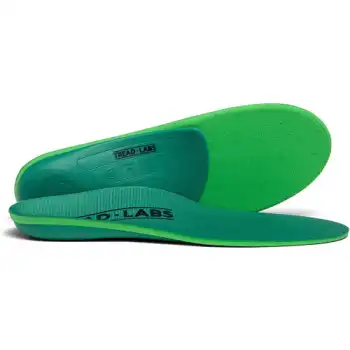
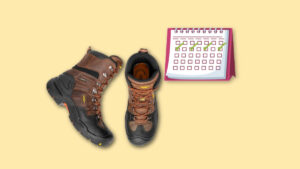
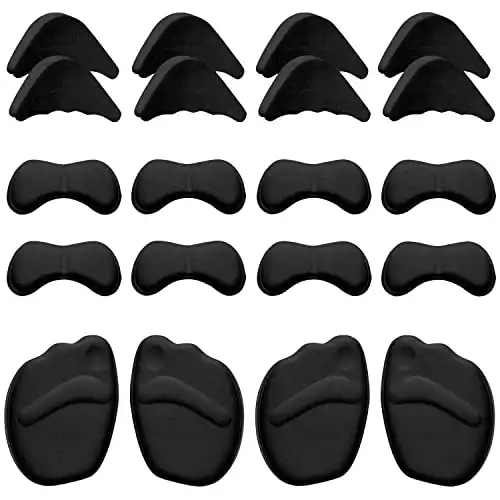
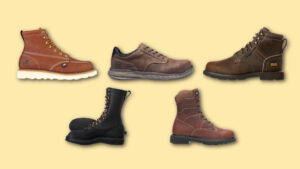
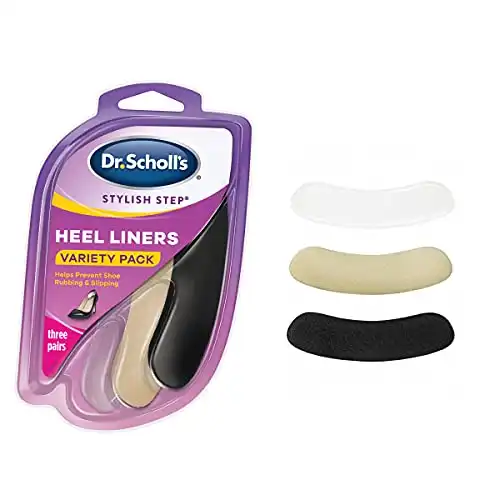
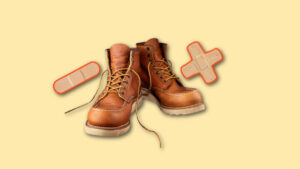
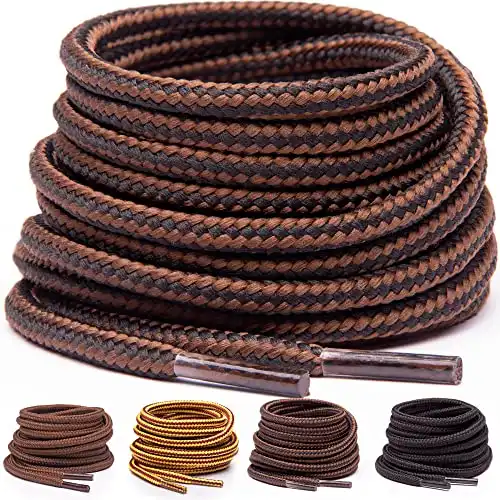
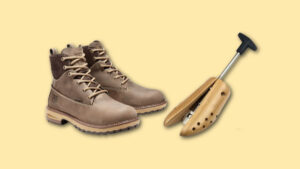

Join the Discussion